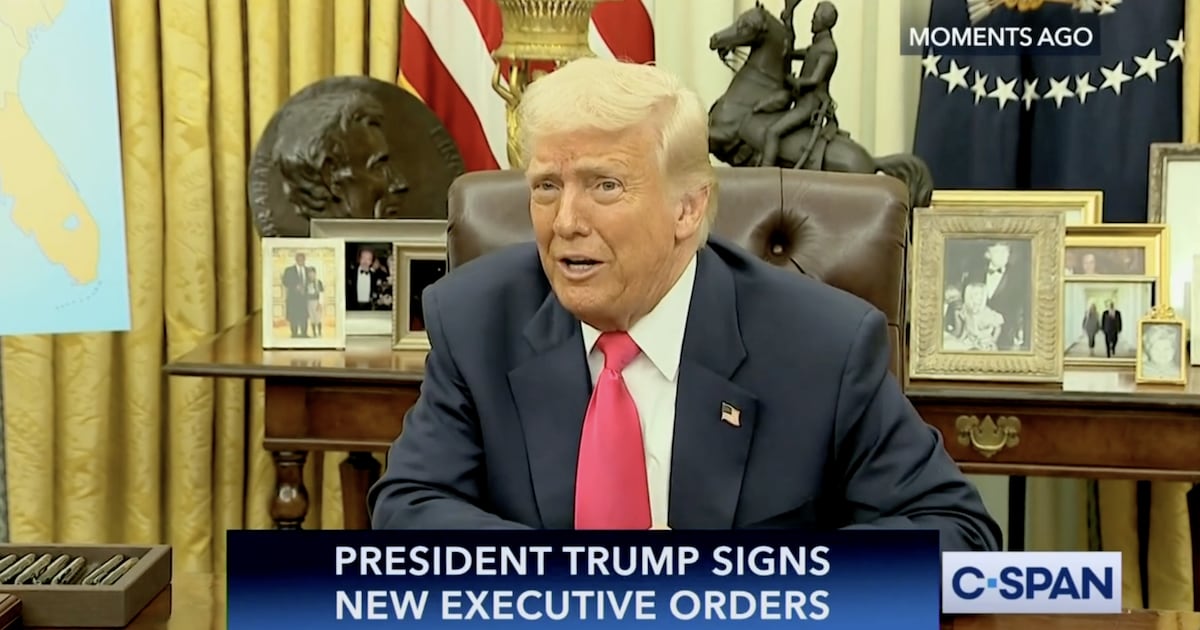It was in 1960 that Nigel Dempster got to witness a change in London’s social whirl up really, really close.
Dempster, who would go on to become one of the UK’s leading gossip columnists, was in Esmeralda’s Barn, a night spot, which had only been remarkable for not being in Mayfair or Soho but on Wilton Place, Knightsbridge.
But this was a time when London was gripped by a gambling habit, the game of choice being chemin-de-fer, known as “chemmy.”
A quasi-legal floating “private” game run by John Aspinall was the most famous. Indeed too famous. An article in the New Statesman, with the sarky title, “Asper’s Little Shindig” was the tipping point, and the Betting and Gaming Act of 1960 legalized casinos to keep this behavioral epidemic out of criminal hands.
So Esmeralda’s was now a piping hot little casino. I’m a poker player and games of pure chance are not for me, but I would go from time to time, just for the theater.
I wasn’t there though on the evening when Dempster climbed to an upper floor, looking for the office, with another friend, a toff called Willie. They opened a door onto an ugly scene. Ronnie and Reggie Kray, the Twins, London’s notorious crimelords, were there with a woman. A woman I knew. She and her partner had an interest in the club. The Twins were beating the crap out of her. Both had been boxers.
“I was looking for a Bloody Mary,” said Willie, the toff—at least in Dempster’s telling—“But this is ridiculous.”
“You’ll be bloody if you don’t get out of here, son,” one of Krays advised.
They got out of there.
So the Twins, East Enders with aspirations to grow their business in the posh West End, were now the bosses of Esmeralda’s. Which became the boîte of choice for such habitués of the Colony Room on Dean Street, Soho, as the artists Lucian Freud and Francis Bacon, obsessive gamblers both.
Each would often be seen at the table. A gallerist friend told me that Bacon had got deeply into the red at one juncture and had a visitor.
“Well, Francis,” he was told, you won’t paint too much if you don’t have any ‘ands, will you?”
Bacon was notorious for destroying much of his work, but it seems that on this occasion some canvases swiftly found their way into the marketplace so the club played a worthy part in enriching our cultural heritage.
Esmeralda’s lost no heat in the hands of the Krays. They relished the company of the aristocracy. Indeed, their front man at the club was a peer, Lord Effingham—imagine how much fun the Krays had with that title—who kind of relished them back because this was a moment when the upper class, or some of its more venturesome representatives at any rate, liked to distinguish themselves from the stuffy bourgeoisie by consorting with Haute Bohemians; con-men and criminals very much included. This new non-stop party was known as “The Chelsea Set.”
Ron Kray also had a weakness for celebrity. And the Krays were becoming celebrities too. In 1965 the photographer David Bailey included them along with Warhol, Dalí, John Lennon et al. in his Box of Pin-Ups. A caption described them as “businessmen.”
But the Krays were violent criminals, specializing in protection—that is what they did—and from time to time there were would be chillingly brought home.
David Litvinoff, a friend of mine—a charter Chelsea Setter and one of the most physically formidable people I have ever met—knew the Twins well—so well that he helped Donald Cammell craft the screenplay for Performance, Cammell’s gangland-inflected movie starring Mick Jagger, which was a key document of that time, that place.
Litvinoff was gay. As was Ron Kray. Litvinoff chose to romance a croupier at Esmeralda’s Barn, called Bobby Buckley. Who was also a favorite of Ron Kray’s. Not a smart move, this.
There are several versions of what happened next, but I like mine because it came from somebody close to the events.
Litvinoff was cut from ear to ear with a razor, then stripped and hung by the feet outside his window. I was also told that it was Lucian Freud who paid to have him sewn up. Freud and he were close, for sure.
Freud painted Litvinoff’s portrait, even if he gave the canvas a backhander of a title, The Procurer, but it was not a subject I ever felt like raising with either. The scar was real. Very.
The villainies of the Krays were well-known. So was their immunity. The police, the press were wary. They were Teflon Dons way before John Gotti.
The writer John Pearson made an excellent job of clearing the mystery up. It begins so. Ron Kray had been introduced by one of his lads, Leslie Holt, a handsome cat burglar, to Lord Boothby, a power in the Tory party and a beloved figure on TV.
Boothby had met Holt in “a gambling club,” one presumes Esmeralda’s Barn. Certainly he visited Ron Kray there in 1963 and their relationship blossomed because of a shared interest in male teenagers between 16 and 18, who Ron Kray was always ready to provide.
It should be added that Boothby was involved for many years in an affair with Dorothy, the wife of a fellow Tory MP, Harold Macmillan. Who was now the leader of the party. He even saw to it that Boothby got a title.
Boothby, always a gambler and an andrenalin junkie, took Ron Kray to dinner in both the House of Lords and—a rather choosier institution—White’s Club, St James’s.
In 1964 a London tabloid, The Sunday Mirror, published a story with a banner headline, Peer and a Gangster: Yard Probe. Photographs soon being seen in Fleet Street included one in which Boothby was seated a sofa in his Eaton Square apartment, alongside Ron Kray and Leslie Holt.
Boothby denied everything, and sued, but the story looked ready to blow. Then the government moved in. Scotland Yard stoppered the probe. And elements in the press inclined to publish—so as to help Harold Wilson’s Labor party topple the Tories—were surprised to find that Harold Wilson was adamantly against disclosure too.
The Mirror group paid Boothby a hefty settlement and Pearson’s otherwise excellent book, The Profession of Violence, came out with a crucial section missing.
The truth came out some years later, again through Pearson.
Boothby was very close to a man equally prominent in London life, Tom Driberg. Driberg, who was both a former Labor party chairman, a gossip columnist for the Daily Express and the author of a biography of the spy, Guy Burgess, Boothby and Ron Kray had shared sexual interests.
Indeed, Driberg and Ron Kray both had affairs with a psychopathic gangster called “Mad” Teddy Smith. But Driberg was politically close to Harold Wilson. So the thing was closed down. And Driberg would be given a title too. He died in 1976.
Five years later Chapman Pincher claimed in a book, Their Trade is Treachery, that Driberg had been recruited by MI5 to spy on the Communist Party but that he was also working as a double agent for the KGB.
Two reactions seem legitimate. One is old-fashioned: You couldn’t invent this stuff! The second is more complex, which is that in our age of iPhones and transparency such scenarios would surely be impossible; also that phenomena like Wikileaks, overly zealous government watchmen and Internet shaming may just be the price we have to pay for our weird transparency.
At any rate the Krays’ Teflon coating wore out. The Twins each murdered other hoodlums in 1966. Ron confronted George Cornell, who had publicly called him a “fat poof,” in an East End pub, The Blind Beggar, and shot him in the head.
Reggie killed the criminal Jack ‘The Hat’ McVitie, in 1967.
Two years later both Krays were convicted of the murders and sentenced to life imprisonment.
In 1990 Peter Medak, an old friend, shot The Krays, starring Gary and Martin Kemp, from the New Romantic group Spandau Ballet, playing the Twins.
I was assigned by Vanity Fair to write a piece and arranged to see Ron Kray in Broadmoor, a hospital for the criminally insane. I visited the Blind Beggar the day before. But it was just another pub.
I went to Broadmoor with Kay, who Ron had married while he was inside, a peppy woman whose job was delivering Strippergrams.
Ron and I reminisced somewhat about Esmeralda’s Barn. Then I told him of my visit to the Blind Beggar, hoping to conjure a storm of memory.
Kray pondered.
“I never liked that place much,” he finally offered.
Uh-oh? Why?
“Bad atmosphere,” he said, flatly.
Kay Kray gave an explosive laugh.
“Yes. Specially last time you was there, Ron,” she said.
The Kray Twins are both gone. Esmeralda’s Barn too. The land on which it stood is now a part of the Berkeley Hotel.






